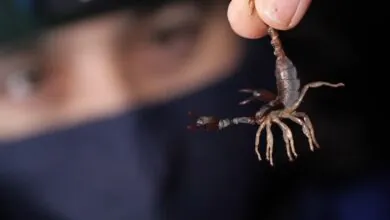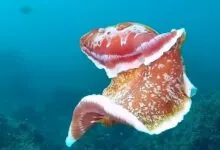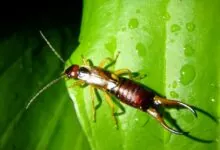Lamprey: Master of Suction, Jaws Nowhere in Sight!
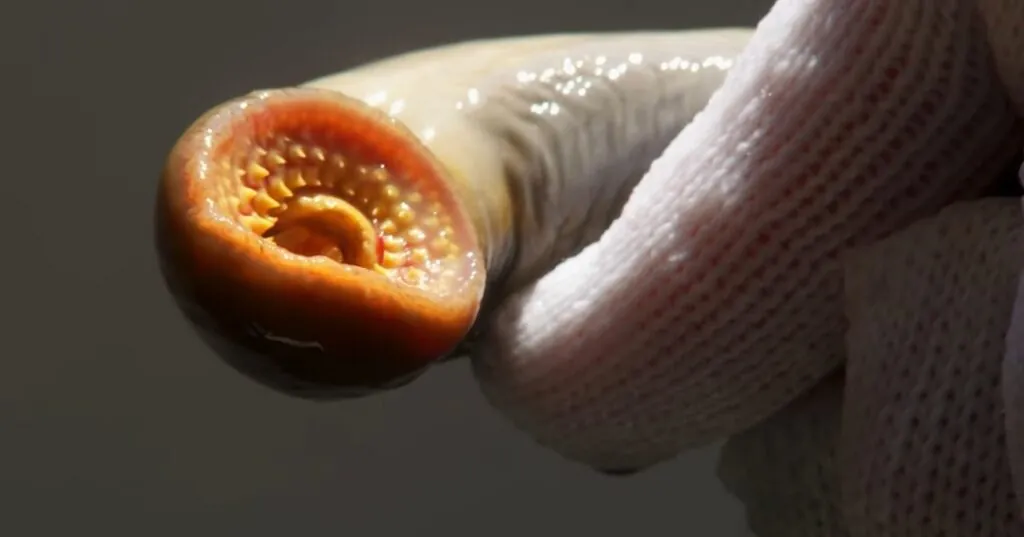
Lamprey, an ancient aquatic marvel, having jawless circular mouth adorned with countless rows of razor-sharp teeth, serpentine body has an allure that intrigues. The scientific name of lamprey is Petromyzon marinus – the word “Petromyzon” signifies “stone sucking” with “petro” means “stone” and “myzon” implies “sucking”; the world “marinus” signifies “of the sea”. Another dramatic name the species is renowned for is vampire fish thanks to its feeding on other creatures’ blood.
| Kingdom | Phylum | Class | Order | Family | Genus | Scientific Name |
| Animalia | Chordata | Petromyzontida | Petromyzontiformes | Petromyzontidae | Petromyzon | Petromyzon marinus |
Origin and Evolution
In the matter with the lamprey’s origin, fossils show evidence pertaining to the existence of these creatures about 360 million years back in time; no considerable changings occurred during this stretched timespan. These species belong to the superclass Agnatha, which encompasses jawless fish of every kind. Being marine organisms, the lampreys had cartilaginous skeletons.
When it comes to the lamprey’s evolution, these creatures, with numerous species adapting to diverse ecological roles and habitats, have followed an extended and complex path. As they evolved, they retained their jawless feature that is a feather is its cap. The unique oral disc – a circular, sucker-like mouth lined with sharp, horn-like teeth – is one of the most typical adaptations.
Distribution
In connection with the lamprey’s distribution, it’s widespread across multiple continents and regions, including both marine and freshwater environments, and showcases its adaptability and evolutionary success.
North America
Lampreys are conspicuously located in both the Atlantic and Pacific regions. The sea lamprey – Petromyzon marinus – native to the Atlantic, has been led to the Great Lakes.
Europe
Europe houses multiple species, encompassing European Brook lamprey (Lampetra planeri) and European River lamprey (Lampetra fluviatilis) in freshwater environments and the European River lamprey (Lampetra fluviatilis) along the Mediterranean Sea and coastal regions.
Asia
These animals are distributed in Asia as well. For instance, the Japanese lamprey (Lethenteron japonicum) is found in Japan and in some neighboring regions.
Africa
In contrast with the rest of the regions, these fish have a limited distribution in Africa. The African lamprey (Lampetra sp.) is located in freshwater systems on the continent.
Australia
The Southern Hemisphere lamprey (Mordacia mordax), a unique species, is native to Australia; it’s found in the freshwater habitat of southern Australia and Tasmania.
South America
As compared to other regions, the region has a few native species, like Geotria australis located in the freshwater systems of Argentina and Chile.
Population
In the matter with lamprey’s population, depending on factors such as habitat availability, human activities and water quality, its population size can range from abundant to threatened. The species live in the Northern Hemisphere and can be located in the western and northern parts of the Atlantic Ocean, encompassing along the shores of North America and Europe.
In the same vein, they’re present in the western Mediterranean, the Black Sea, the Connecticut River basin, and along the shores of the Great Lakes. The lifespan can be observed divided in two parts – a part in freshwater and part in saltwater. Their kidneys alter, during their ultimate metamorphosis from filter-feeders to parasitic lampreys, to put up with saltwater, letting them to step into lakes and oceans to pursue hosts for survival until spawning.
Historical Spread
In 1830s, the first sighting of these creatures happened; it’s unpredictable if they were already present there or introduced through Eire Canal which finished in 1825. In 1919, development of the Welland Canal let the species’ population to stretch from Lake Ontario into Lake Erie and from there, it proceeded to Lakes Michigan, Superior and Huron.
Population Status
The population of these species is not even close to endangered; as a matter of fact, massive efforts to lessen its population have been made in the Great Lakes basin where it impacted negatively on populations of lake trout and other fish after its introduction in the 1930s and 1940s. During its 12 to 18-month adulthood before spawning, a vampire fish can kill fish weighing up to 40 pounds, which result in a drastic decline in fish stocks.
Ecological Impact
What impacted on the Great Lakes ecosystem is the introduction of lampreys. The harvest of lake trout was upwards of 15 million pounds per year before their introduction. By the early 1960s, thanks to the lamprey’s predatory doings, this figure dropped to 300,000 pounds per annum only.
Habitat
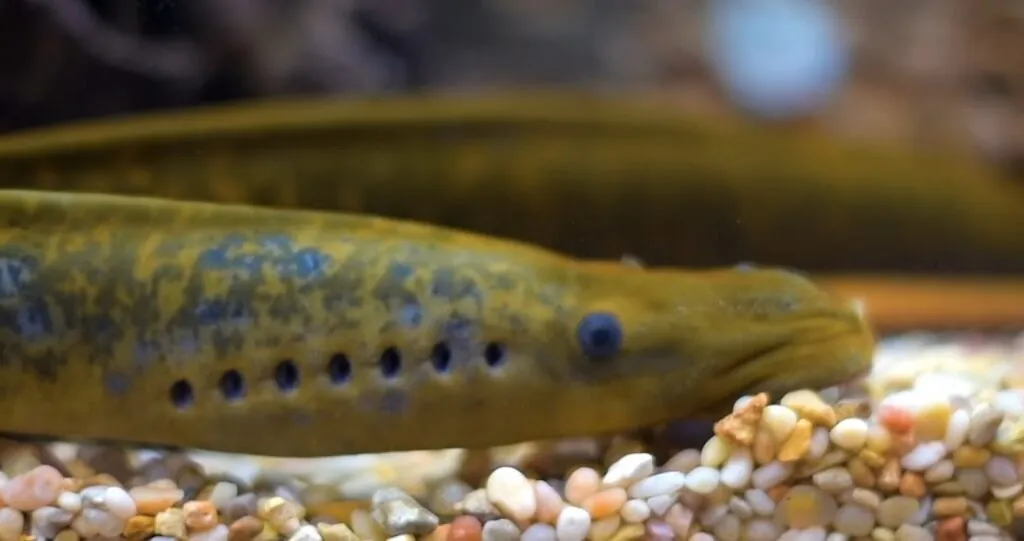
With respect to lamprey’s habitat, it’s evolved to flourish in wide ranging aquatic environments around the world. Let’s unfold its habitat preferences, spotlighting its adaptability and unparalleled existence in various water bodies.
Freshwater Habitats
Being primarily freshwater species, lampreys make oceans, rivers and lakes their preferred habitats. They can be located in temperate regions of North America, Europe and Asia, albeit some species can be present in tropical and subtropical regions.
Anadromous Lampreys
A considerable portion of these species are anadromous, that is, they spend part of their life cycle in the ocean and part in freshwater. During their adult stage, anadromous lampreys migrate to the sea, where they feed and engage in maturation before getting back to their natal freshwater habitats to spawn.
Parasitic Lampreys
During their adult age, the parasitic nature is a unique aspect of lampreys. Using their sucker-like mouthparts, these creatures attach themselves to the bodies of larger fish and feed on their host’s blood and bodily fluids. The very behavior is common in certain species and can pose a threat to the host fish populations, particularly in areas where lampreys have been introduced outside their native range.
Lampreys in Estuaries
These species can be located in estuaries – the transition zones between saltwater and freshwater environments. Estuaries are equipped with rich feeding grounds that provides them with a variety of food sources, making them vital habitats for particular lamprey’s populations.
Burrowing Behavior
A burrowing behavior they exhibit in sandy or fine-grained substrates where they cause a depression in the sediment and reside moderately buried. The burrowing behavior provides them protection against predators and strong currents. In some regions, their habitats overlap with Bull Sharks, creating an interesting ecological dynamic between these distinct aquatic creatures.
Appearance
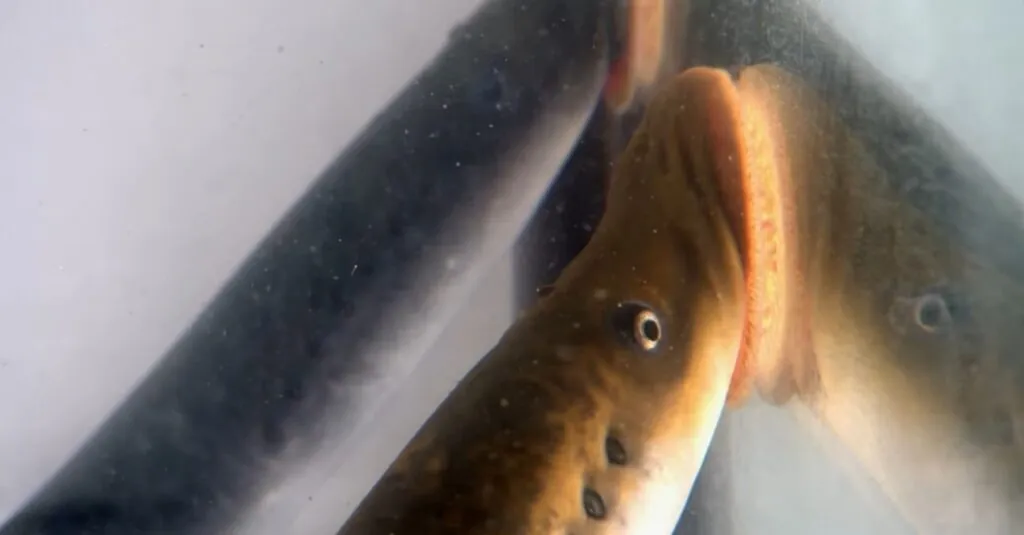
Owing to the fact that these creatures have long, snake-like bodies showcasing smooth, scaleless skin that gives them a look remarkably identical to eels, numerous people are of the view that eels and lampreys are close relatives, but as a matter of fact they’re not.
Body Structure
The slender and cylindrical shape of lampreys’ eel-like bodies let them to maneuver through water with ease. They’ve skeleton made of cartilage giving them more flexibility compered to bony fish. Differing from most fish species, the species lack paired fins but have single dorsal fin running along their back.
Jawless Mouth
The jawless mouth of lampreys is among the most distinctive features setting them apart from the rest of fish. In lieu of a true jaw, they have a circular, sucker-like mouth equipped with rows of sharp, keratinized teeth.
Anatomy
| Tongue | A specialized tongue-like structure called the oral disc |
| Mouth | A circular, sucker-like structure |
| Teeth | Rows of sharp, keratinized teeth in their oral disc |
| Nose | Nasal openings that they use for olfaction |
| Skeleton | Primarily cartilaginous |
Reproduction and Life Cycles
Lampreys, jawless fish belonging to the superclass Agnatha, showcase an unparalleled life cycle and reproductive strategies. Let’s dive into the fundamental perspectives of their survival and propagation.
Reproductive Behavior
There’re two primary reproductive strategies these creature display. The major part of these species showcase anadromous behavior, moving from the sea to freshwater for spawning. They make use of their mouths to cling onto rocks and wear down obstacles they face during migration. While some other, known as landlocked lampreys, remain in freshwater throughout their lifespan and don’t undertake long migrations.
Life Cycle
Transitioning through multiple levels, these species undergo a metamorphosis during their life cycle. They start as larvae named ammocoetes, filter-feeding organisms residing in freshwater environments. As ammocoetes, they experience metamorphosis, becoming sexually mature adults. Their return to freshwater from ocean or sea for reproduction is subject to the kind of species.
Spawning
During reproduction, these species engage in circling, nudging and biting to have mating pairs. In contrast to the majority of fish species, lampreys don’t have separate configurations for gametes; they possess gonads distributed along the body wall. Into the constructed nests females lay eggs, whereas males concurrently release milt – sperm – to fertilize the eggs.
Early Life of Offspring
After the eggs have fertilized, the eggs modify into larval forms referred to as ammocoetes, which filter-feed in freshwater until metamorphosis takes place. Following this, the ammocoetes turn into sexually mature adults, continuing the life cycle of lampreys.
Mating Habits
| Mating Behavior | Anadromous |
| Reproduction Season | During spring or early summer |
| Independent Age | Lamprey larvae (ammocoetes) are independent |
| Baby Name | Ammocoetes or juveniles |
Lifestyle
Lampreys having an eel-like appearance, are known for their parasitic feeding habits and exclusive migratory behavior. They’re capable of attaching themselves to hosts to feed on body fluids and blood; they can be non-parasitic as well, consuming detritus and algae. Having a long evolutionary history dating back over 360 million years, these creatures play a crucial role in freshwater ecosystems.
Prey and Diet
These species have exceptional feeding habits distinguishing them from other fish species. Their prey and diet in contingent to whether they’re parasitic or non-parasitic.
Parasitic Lampreys
The parasitic feeding behavior of these species is among the most stimulating aspects. Their specialized circular mouths equipped with sharp teeth, permitting them to latch onto their host species. They make use of their dominant oral disks to develop a vacuum-like suction, firmly fastening themselves to their prey. Lamprey’s prey includes various fish species, such as trout, sturgeon, salmon, lake fish and some marine mammals.
Non-parasitic Lampreys
Non-parasitic lampreys have distinct dietary strategy, primarily feeding on microscopic organisms, including algae, plankton and small aquatic invertebrates. The sophisticated gill structure of these species let them to filter food particles competently from the water. In contrast with parasitic lampreys, these fish are less dependent on particular host species and more on the accessibility of appropriate food particles in their environment.
Threats and Conservation
When it comes to the threats and lamprey’s conservation, habitat loss and degradation is on the top of the list. Human development, such as urbanization and dam and weirs construction has pose a threat to their spawning and rearing grounds, extinguishing their life cycle and lessening their population numbers. These factors also cease their migration between freshwater and marine environments.
Relationship with Humans
Being slow swimmers, the lampreys don’t cause any disruption in human doings; they’ve non-aggressive behavior towards humans. In some cultures, including Spain, Portugal, France, the United Kingdom, Japan, and Chinad, this fish is considered a delicacy. Certain lampreys with their matchless taste cherished by some culinary enthusiasts have been traditionally harvested for consumption. Coupled with their usage as food, they’re believed to possess medical properties; they, now and then, have been used as bait for fishing as well.
The Rundown and Fun Facts
| Common Name | Lamprey |
| Other Name(s) | Vampire fish |
| Number of Species | 38 |
| Population Size | Sea lamprey 15,269 & River lamprey 116,109 |
| Lifespan | Up to 7 years |
| Weight | 5.1 pounds (2.31 kg) |
| Length | 12 to 40 inches (30 to 100 centimeters) |
| Predator | Brown trout, walleye |
| Prey / Food | Lake Fish |
| Most Distinctive Feature | Unique circular, sucker-like mouth, a delicacy in France, Spain, and Portugal |



